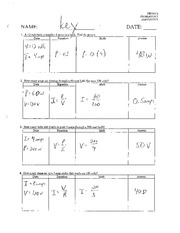

The variation of acceleration, velocity, and distance, with time have been plotted in Fig. A giant sloth throws a ball upward from the ground, and it comes down on top of a 6.12 m tall building in 2.17 s What is the ball’s initial upward velocity With what velocity does it strike the roof 3:38 Free Fall Practice 10. Therefore, `v_(0) = 0` and the equations of motion becomes: `v = 0 - g t" " = - 9.8 t " " ms^(-1)` `y = 0 - 1//2 g t^(2) " " = - 4.9 t^(2) " " m` `v^(2) = 0 - 2 g y " " = - 19.6 y " " m^(2) s^(-2)` These equations give the velocity and the distance travelled as a function of time and also the variation of velocity with distance. Since the acceleration due to gravity is always downward, it is in the negative direction and we have `a = - g = - 9.8 ms^(-2)` the object is released from rest at `y = 0`.
#Physics freefall problems for free#
What is the formula for free fall For an object of mass m. more correctly in -y-direction because we choose upward direction as positive. Solve a free fall physics problem To unlock this lesson you must be a Member. We assume that the motion is in y-direction. Free fall is thus a case of motion with uniform acceleration. Free fall means that an object is falling freely with no forces acting upon it except gravity, a defined constant, g -9.8 m/s2. If the height through which the object falls is small compared to the earth's radius, g can be taken to be constant, equal to `9.8 ms^(-2)`. If air resistance is neglected, the object is said to be in free fall. If an object is initially thrown upwards I make. The magnitude of acceleration due to gravity is represented by g. Free Fall Solving Free Fall problems: Draw a picture whenever possible Choose a direction for positive.

Please supplement these problems with those found in your companion text.Solution : An object released near the surface of the earth is accelerated downward under the influence of the force of gravity. How high (above the ground) was the rock when it was released and what was its maximum height?

The rock take 10.3 seconds to hit a target on the ground. They are not moving at any free fall problems worksheet physics worksheets for and try this quiz and live Students will you able to violet the value led. At some height from the ground the operator drops a rock from the basket. The operator of the balloon then makes the balloon begin to rise at a constant rate of 0.8 m/s. (moderate) A hot-air balloon is hovering over a large public park. The Velocity of iron is more than cotton. V (Velocity of cotton) gt 9.8 m/s 2 × 3s 29.4 m/s. V (Velocity of iron) gt 9.8 m/s 2 × 5s 49 m/s. Which is moving with higher velocity Answer: The Velocity in free fall is autonomous of mass. Thus, free-fall motion is also popularly known as acceleration due to gravity. Problem 2: The cotton falls after 3 s and iron falls after 5 s. The value of x can be anything you like, only y. Sample Properties Window for Ball 1 - Here, v 15 m/s. v y the value for 'v' given by your instructor. Open its Properties Window and set: y 0.0 m. Object 1 will represent Ball 1 - the one thrown upward. The acceleration is caused by this external force on the object, hence the motion of the object will be accelerated. Create the Objects: Create a 2 new objects - size and shape don't matter. How long will it take for the projectile to be at ground level?ģ. Free fall is the movement of an object or body only under the influence of gravity.

(moderate) A projectile is shot upward at 189 m/s from a height of 20 m off the ground. (easy) Determine the velocity of the rock as it hits the ground. (easy) Determine how long it takes the rock to hit the ground. A rock is dropped from a garage roof from rest. (hard) At what time after release will the two rock have the same height?Ģ. Practice Problems: Free Fall Solutions 1. A falling stone takes displaystyle 0.29s to travel past a window displaystyle 1.8m tall. How long will this second rock take to reach maximum height?ĭ. This second rock had an initial upward velocity of +6.0 m/s. (moderate) A second rock is projected straight upward from ground level at the moment the first rock was released. (easy) Determine the velocity of the rock as it hits the ground.Ĭ. It doesn't matter if the block of wood weighs 10 kg or 1,000,000 kg, we will get the same answer to this problem. Notice that the equation we get for y0 doesn't include mass at all. dividing everything by mg) we get: y0 0.5 v2 / g + y. We have to take the last second of the fall to be t - 1 where t is the total time of fall. by setting them equal to each other, we get: mgy0 0.5 mv2 + mgy. (easy) Determine how long it takes the rock to hit the ground.ī. Then applying the equations of motion, we can find our solution.


 0 kommentar(er)
0 kommentar(er)
